
Two "extremely rare" shipwrecks off the Isle of Wight have been granted the highest level of protection.
The remains of the vessels, named Shingles Bank Wreck NW96 and Shingles Bank Wreck NW68, were discovered off the Needles Channel by divers Martin Pritchard and Dave Fox.
Historic England said they are "well-preserved" which is "extremely rare" given they date back to the 16th and 17th centuries.
It said this, and the unearthing of previously unrecorded wreck sites in the Solent, makes their discoveries "nationally significant".
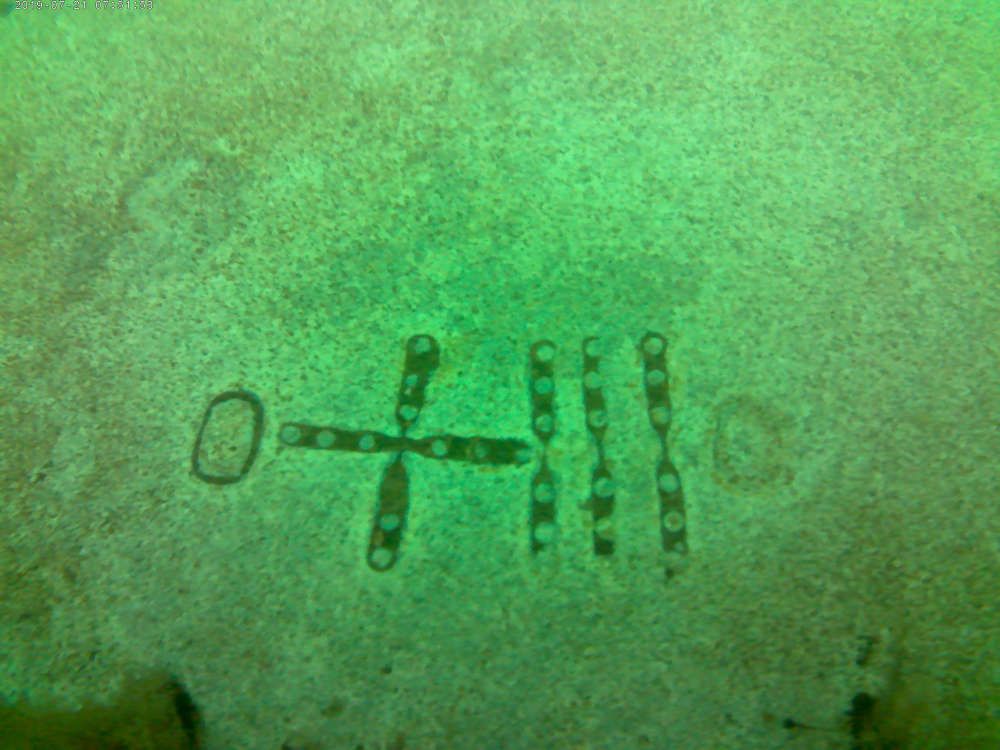
Markings on cargo from the NW96 wreck. Copyright: Martin Pritchard.
Both vessels have been designated protection under the Protection of Wrecks Act 1973.
It means divers need a special license administered by Historic England on behalf of the Department for Digital, Culture, Media and Sport to explore the wrecks.
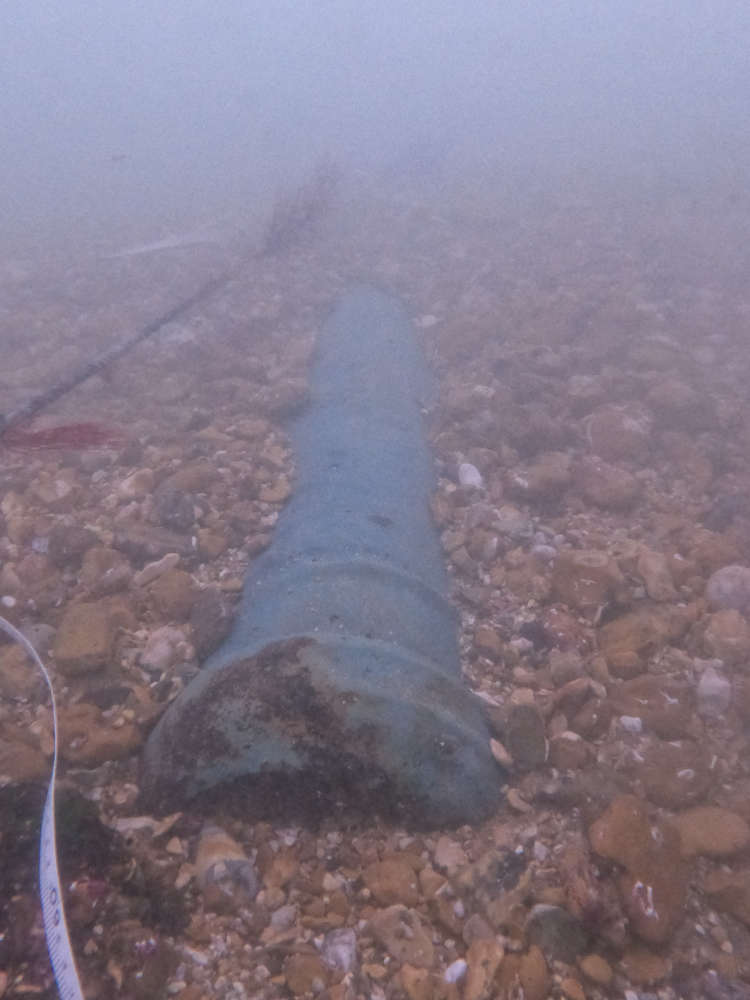
Partially buried bronze cannon on the NW68 site. Copyright: Wessex Archaeology.
Martin Pritchard, co-finder of the Shingles Bank wrecks, said:
“I am very pleased that these shipwrecks dating to the 16th and 17th centuries have been granted the highest level of protection. They are a remarkable find.
"Working with Historic England, volunteer divers and archaeologists, we will continue to investigate, understand and record these wreck sites.”
Their artefacts are protected and their condition is carefully monitored.
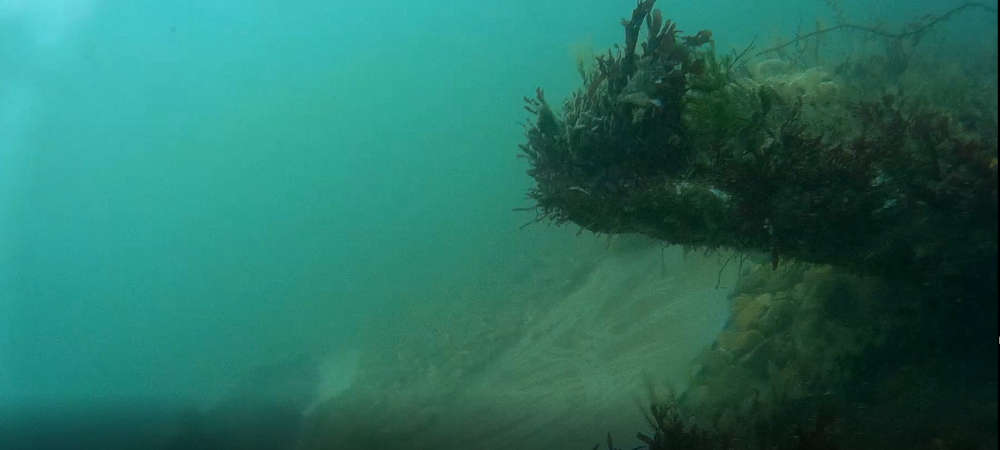 A gun and lead ingots discovered on the NW96 shipwreck, Shingles Bank, the Isle of Wight. Copyright: Martin Pritchard.
A gun and lead ingots discovered on the NW96 shipwreck, Shingles Bank, the Isle of Wight. Copyright: Martin Pritchard.
Also receiving protection is the 13th century Mortar Wreck discovered in Poole Bay in Dorset.
Its cargo of gothic Purbeck stone gravestones is the oldest known protected wreck in English waters where hull remains can be seen.
Heritage Minister, Nigel Huddleston, said:
"These fascinating shipwrecks can reveal so much to us about our national history and it is right that we protect them for future generations.
"The survival of the 13th century Mortar Wreck is particularly rare, with timbers dating to Henry III's reign, and the 16th and 17th century Shingle Bank Wrecks shed light on historical trading."
What are the Shingles Bank Wrecks?
The Shingles Bank in the Needles Channel is a well-known navigational hazard for ships entering the Solent from the west. It is thought that the both NW96 and NW68 became stranded on the banks before sinking.
Archaeological remains of these vessels include several cannons, a large anchor, at least 50 very large lead ingots with unidentified markings and stone cannonballs. The ingots are a fixed size and weight and would have been used as currency for trade – so they could be made into a variety of products including bullets, lead flashing on roofs and pipes.
Initial research suggests the lead ingots were cast from a furnace known as a ‘bole’. Boles fell out of use from around 1580, suggesting the NW96 wreck dates from the 16th or very late 15th century. This theory is supported by the presence of stone cannon balls, which were replaced with iron shot and were no longer used by the end of the 16th century.
Analysis of the cannons indicates that one of them was cast in Amsterdam between 1621 and 1661, which helps place the NW68 wreck as a mid-late 17th century armed vessel, probably of Dutch origin. This indicates that the ship could have been associated with the Battle of Portland in 1653, when the fleet of the Commonwealth of England was attacked by the Dutch Republic during the First Anglo-Dutch War. The Netherlands was the maritime and economic power in the world during this period so this site could help further our knowledge of 17th century seafaring activity.
The finds are being investigated by archaeologists from the Maritime Archaeology Trust and Wessex Archaeology, along with the finders Martin Pritchard and Dave Fox.

 Schools Come Out In Force To Support "Wear What Makes You Happy" Fundraiser For Arlo Lambie
Schools Come Out In Force To Support "Wear What Makes You Happy" Fundraiser For Arlo Lambie
 Entertainment Guide: February 2025
Entertainment Guide: February 2025
 What to Watch in February 2025
What to Watch in February 2025
 Island Update: January 2025
Island Update: January 2025
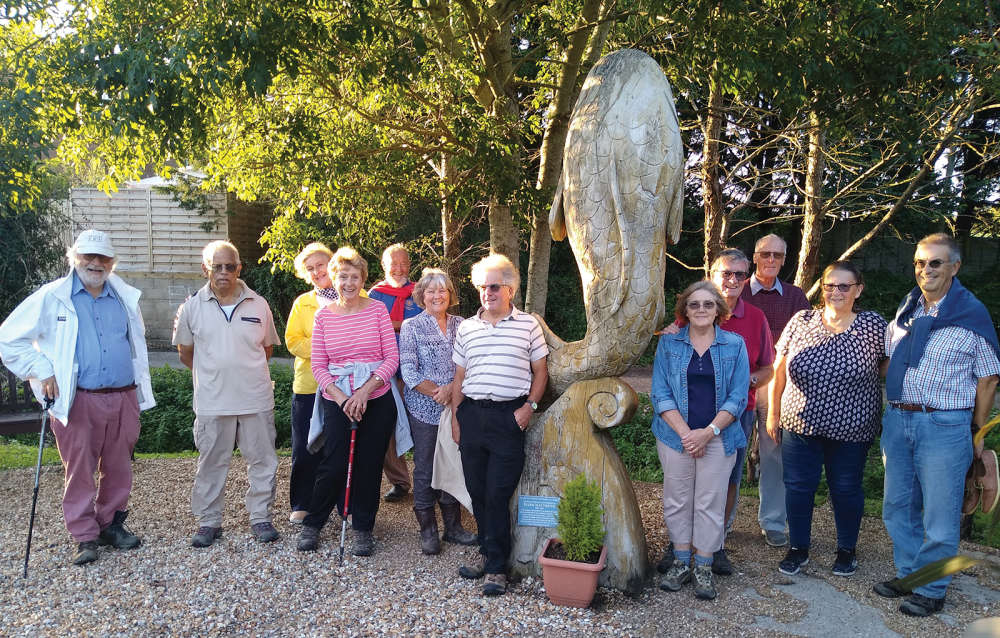 Ryde Rotary Centenary: 100 Years Strong
Ryde Rotary Centenary: 100 Years Strong
 Home Style: Scandi Island Life
Home Style: Scandi Island Life
 What to Watch in January 2025
What to Watch in January 2025
 Entertainment Guide: January 2025
Entertainment Guide: January 2025
 Memorial Held Following Death Of Kezi's Kindness Founder Nikki Flux-Edmonds
Memorial Held Following Death Of Kezi's Kindness Founder Nikki Flux-Edmonds
 Mountbatten Inviting Islanders To Sign Up For 2026 Lapland Husky Trail
Mountbatten Inviting Islanders To Sign Up For 2026 Lapland Husky Trail
 Home Style: Winter Wonderland
Home Style: Winter Wonderland
 Help Available For Islanders To Cut Energy Bills
Help Available For Islanders To Cut Energy Bills
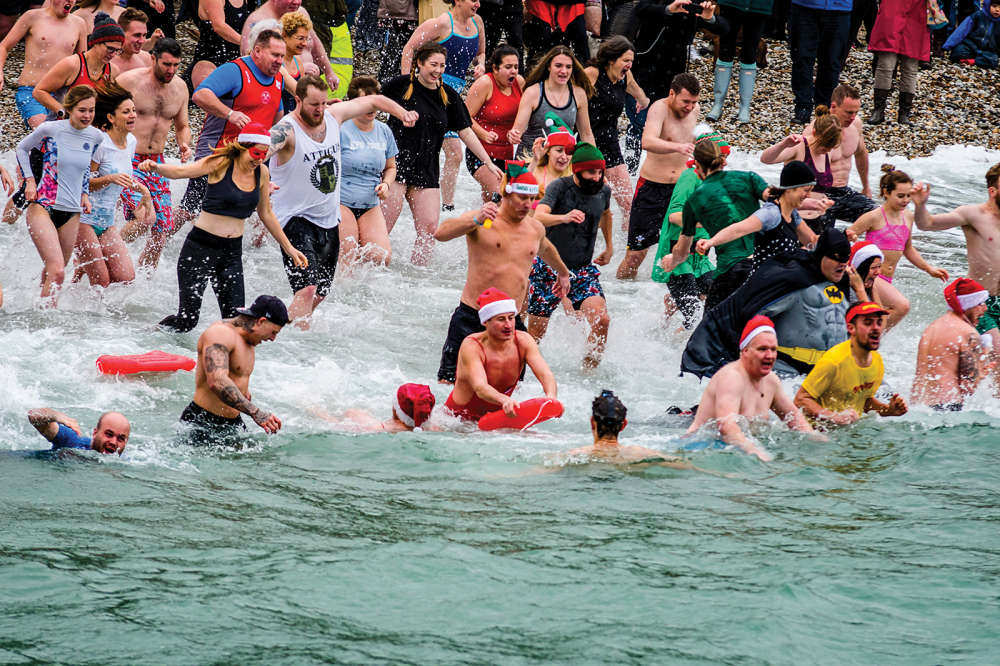 Island Update: December 2024
Island Update: December 2024
 New Home For Citizens Advice Isle Of Wight
New Home For Citizens Advice Isle Of Wight
 The Alternative Guide to Christmas Gifts
The Alternative Guide to Christmas Gifts
 Island Family Launches Appeal For Teenage Son With Brain Tumour
Island Family Launches Appeal For Teenage Son With Brain Tumour
 What to Watch in December 2024
What to Watch in December 2024
 A Gardener’s Best Friend: The Story of Bob the Robin
A Gardener’s Best Friend: The Story of Bob the Robin
 Memorial Quilt To Be Displayed On The Island
Memorial Quilt To Be Displayed On The Island
 Island Author Celebrating Amazon Number One
Island Author Celebrating Amazon Number One